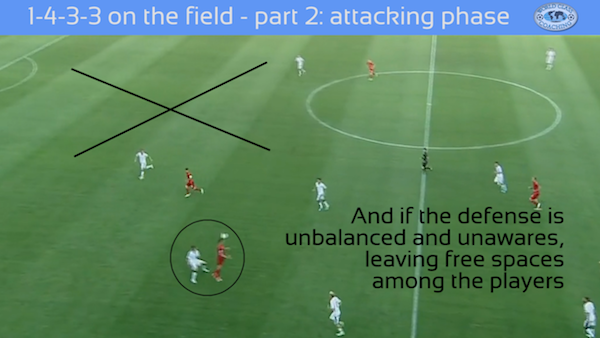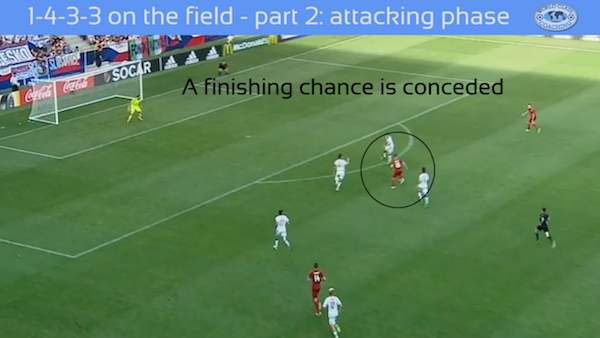WORLD CLASS COACHING
A Quick Guide to the 1-4-3-3
By Luca Bertolini
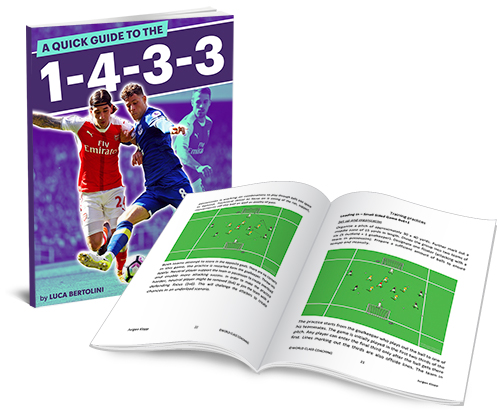
TABLE OF CONTENTS
Part Three
THE ATTACKING PHASE
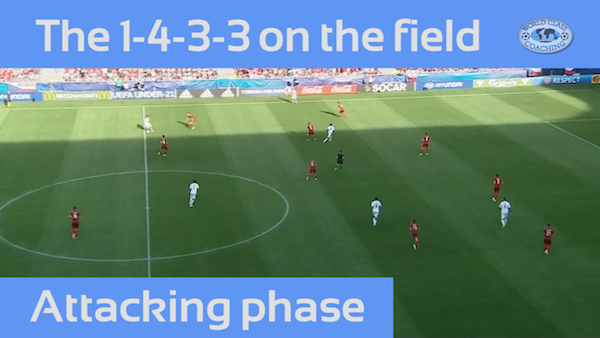
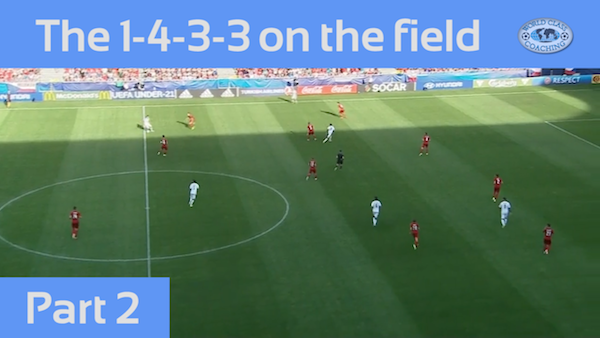
This second part of this e-book is about the transitions to attack and the developments of the attacking moves, starting from the defensive formation shapes.
First of all, let's look again at the main all-pervading principles of play that the team wants to carry out on the field: the numerical advantage near the ball and against the opponent in possession too.
This is an example of 1-4-3-3 defense formation when the pressure tactic against the building up phase of the opposition is not possible: a forward's triangle playing 3 v 2, a line of 3 midfielders playing a potential 3 v 2 situation and a line of 4 defenders against two opponents where a double marking chance is very clear through the full back inside runs.
If the midfielders are outnumbered, a strong area near the ball is created to be at least in equal number of players.
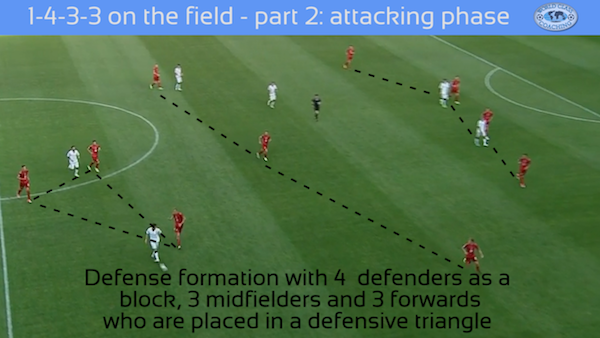
Here we can look again at 3+3 lines of defense formation where the first goal is to close the vertical pass lanes to the opponents while they are building up or playing side by side.
It's very interesting to notice the strong side to play 3 v 2 thanks to a run forward of the outside midfielder, who is closer to the ball, and how the forwards cover his position.
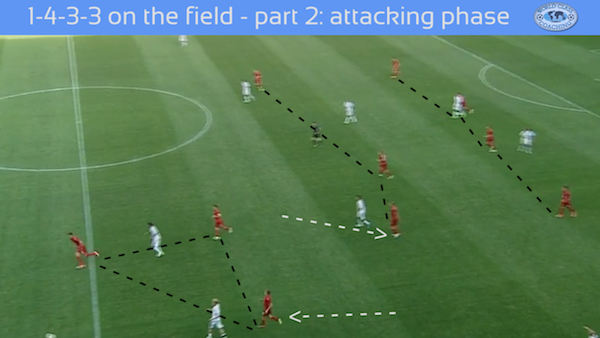
As the direction of opposition's play is sent backwards, the two lines of three are positioned again to close the pass lanes and to create a general numerical advantage situation of 6 v 4.
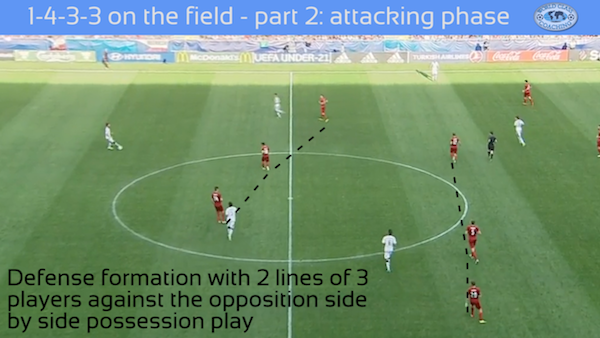
If we analyze this 1-4-3-3 formation, we can see how it is a clear development of a temporary defensive formation from a 1-5-2-3 basic shape in the lower part of the field, during the defensive phase of play.
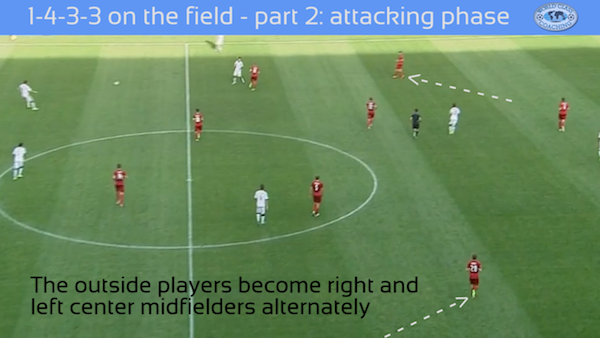
One the outside forwards becomes a full back of the line of five. The possession is then recovered through the pressure of the center forwards who are dropping back; the six players of the advanced line are those who can organize the positive transitions and the counter attacks.
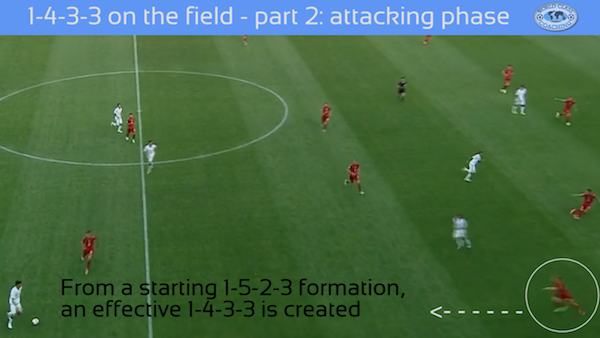
As the possession is ensured, the counterattack shows how the defense style and the move situations always influence the possession phase (and vice versa); as the team is near their own goal, the only way to ensure the possession is to avoid the counter-pressing, dribbling the ball up the field and to wait for a running team mate without the ball.

The teammates must always create numerical advantage situations near the ball, even during the possession and attacking phases.
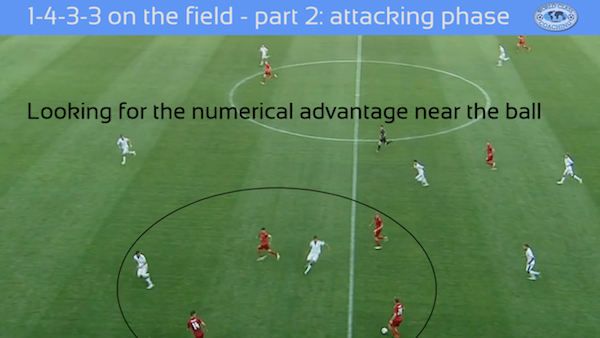
It's interesting how the possession is often recovered thanks to the center forward who drops back to put pressure against the opposition's play maker when the defensive situation requires covering the spaces rather than marking the opponents on.

In this move, where the team must defend the final third, it is again very clear the intention to create numerical advantage near the ball, even when the team is shaped into two lines of four.
The outside forward of the flank where the ball is played recovers the space becoming a fourth midfielder.

The opposite forward must try to stay placed near this line to save the weak side, dropping back deep. This is a very useful defense run, because if he is able to recover the possession of the ball, he can start the counter attack in the weak side.

This side is the previous weak one for the defending team, and it's now supposed to become the strong one of the team who lost the possession, as this phase should be avoided as far as possible from the penalty area.
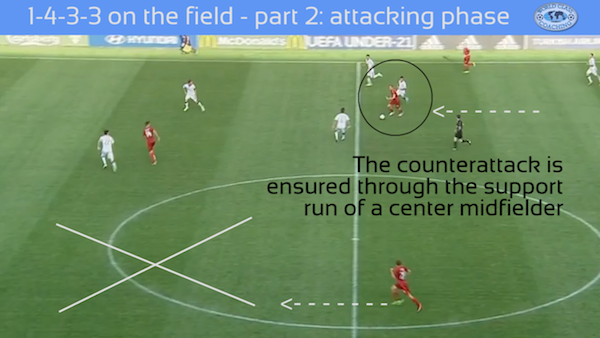
If the midfielders are able to follow the move and to support it in the strong side and in the weak one too, the attacking move can be organized and the finishing phase can be approached very quickly.
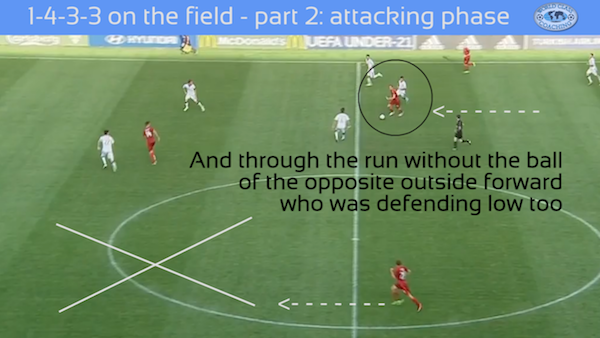
At this point the midfielders are asked to attack and win the second balls.

Below is a different kind of possession phase as it's not coming directly from a transition phase of play, as the possession is already ensured; for this reason all the midfielders are supporting the play by playing inside the opposition half. When the attacking move must be built up through a possession phase, another all-pervading principle of play is very clear; six attacking players have the objective to finish the move: the three forwards and the three midfielders.

As a forward is in possession, two midfielders can attack the space; again the principle of 6 attacking players is very clear: the four at the back play as support, staying placed high to avoid counterattacks if possession is lost.

Talking about the 1-4-3-3 formation, the player who usually drops back to receive and to create space behind him, is the center forward. This is an interesting development, as an outside forward drops back and two midfielders attack the space behind him. The center forward can decide to attack the same space to create a strong side or to run toward the opposition's penalty area to receive a potential cross pass.
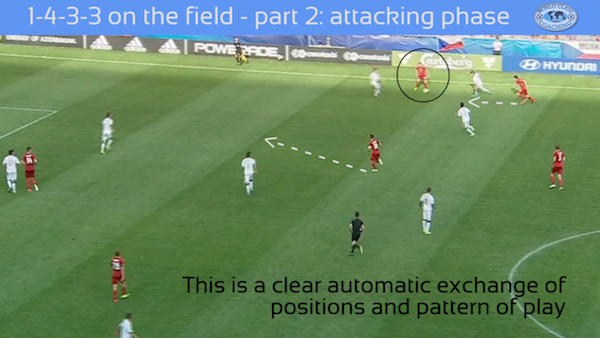
If the move can't be finished and it has to be built up again, the principle of the six attacking players is respected even with the players in different positions; the outside right forward is now a winger (or a right midfielder) as well as the left one. The two midfielders are attackers in the strong side.

The defenders have only support role to keep the possession safe if there are no space to bring the move to the final stage.
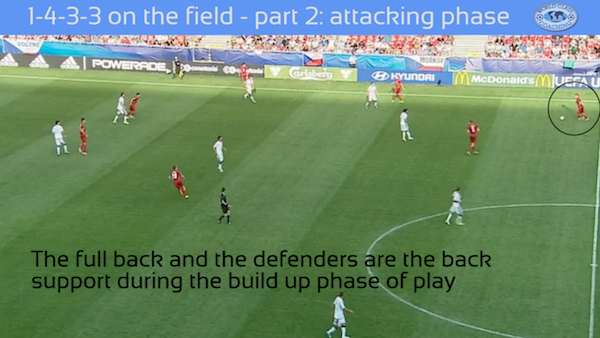
The four at the back have mainly defending roles: they have to attack a second ball high on the field, running forward, as well as to run back to save the deep space against the opposition's forwards.
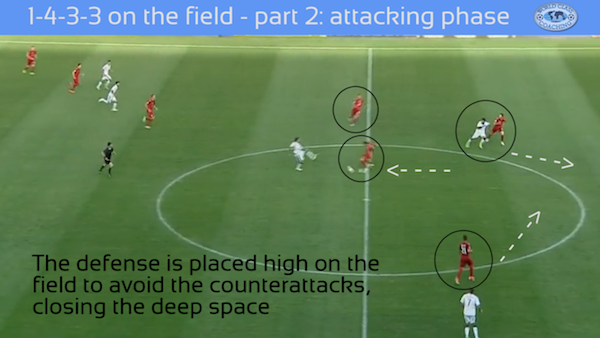
If the possession phase can be built up without pressure, it very clearly leads to the principle of the midfield triangle, with a lower play and two center midfielders. Another idea is also very clear: create a strong side with all the three forwards which leaves a big part of attacking field free for the midfielders. This is the opposite one more often, which they can run through without the ball.
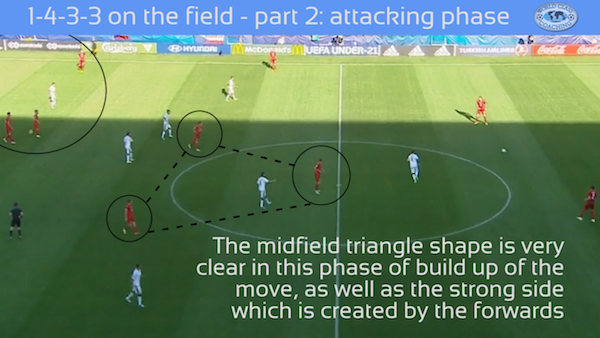
Four players are building up in a strong side and a fifth one (the left midfielder) is running through the weak side of the opposition.
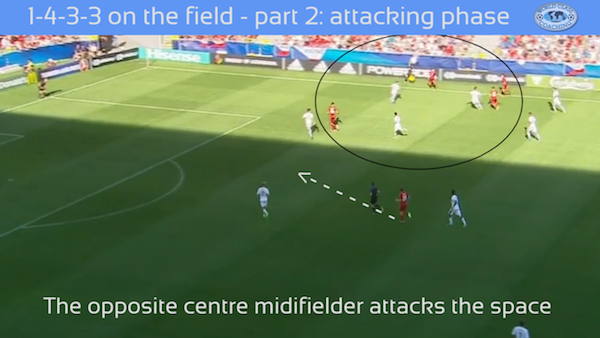
This is another formation shape of two lines of four players and one of them must always put strong pressure against the opponent with the ball. Usually he is the center forward who is dropping back.
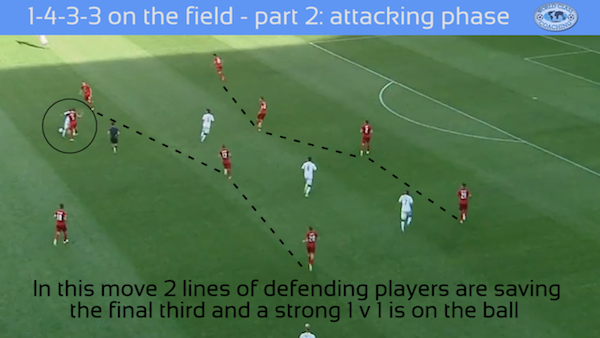
The first player who recovers the possession and who can ensure it is also the one who must organize the transition phase (the full back here).
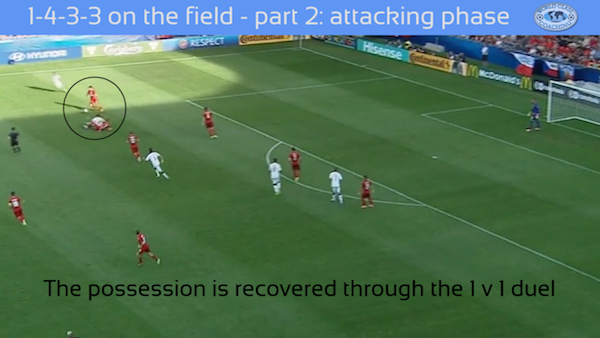
The principle of six attacking players is again followed as one of the midfielders covers his position at the back.
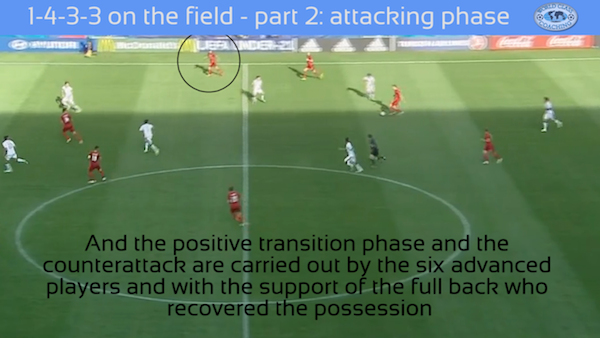
In this last part we are going to analyze the long passes which are often useful to make the team run forward on the field as well provided that the triangle midfield is able to win the second balls in different situations; after a long ball of the goalkeeper...
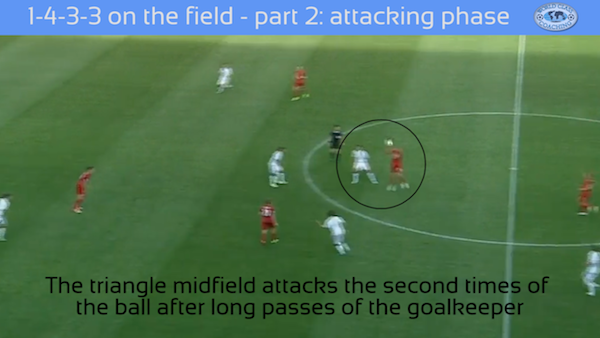
...after rebounds to keep the possession...
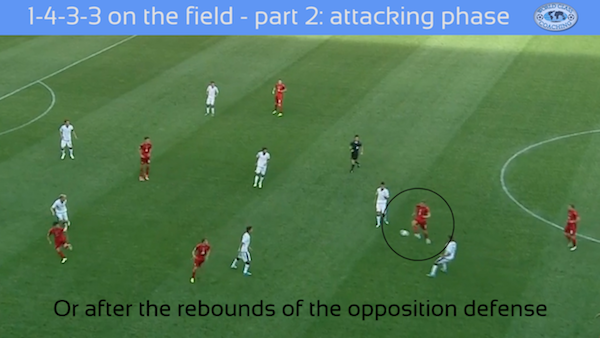
...or to finish just outside the penalty area also.
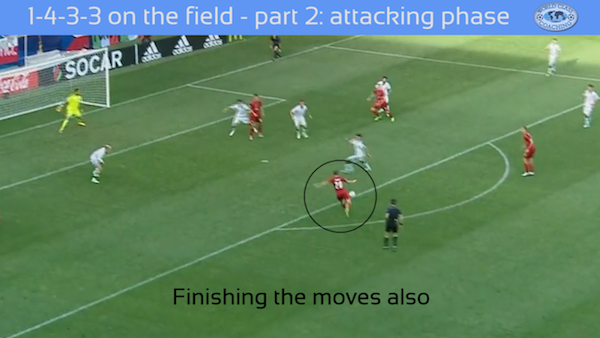
A second kind of long balls is used to switch the side, to avoid the pressure of the opposition and to find a space to combine through an overlapping run wherever it is, inside or outside. Here again the full back supports the attacking move, but the principle of six advanced players is clearly respected again.
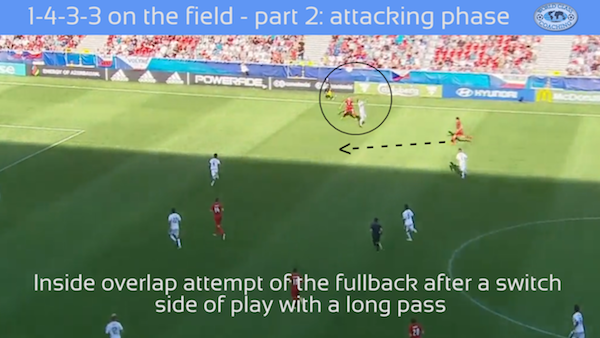
In this situation the pass lanes are closed, so the solution is to play a long ball to bring the team up on the field and to win the second balls, through strong pressure and high density of players.
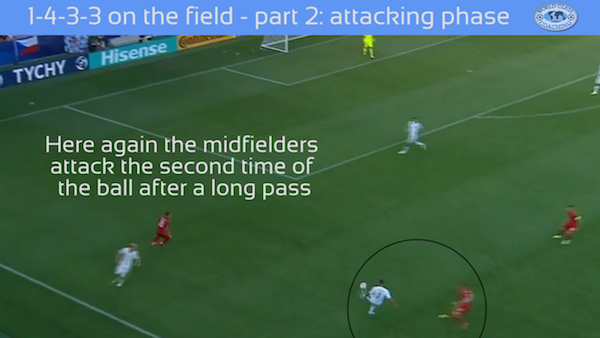
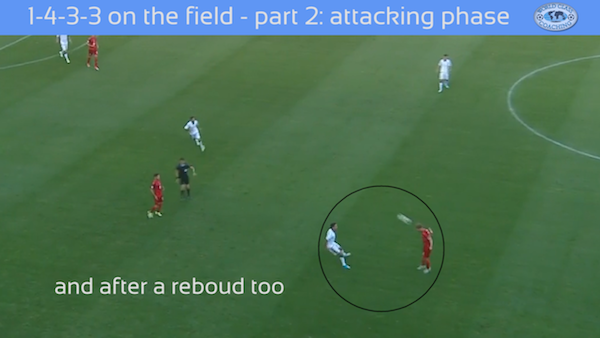
The same principle allows to avoid the counter-pressing of the opposition and to try to find the defense out of time...
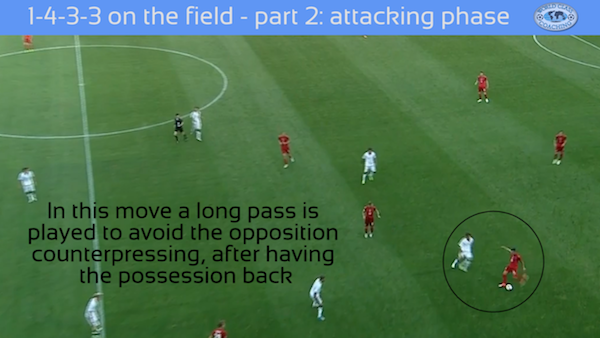
...a useful space to play in and to finish as in this last move which ends with a goal.
